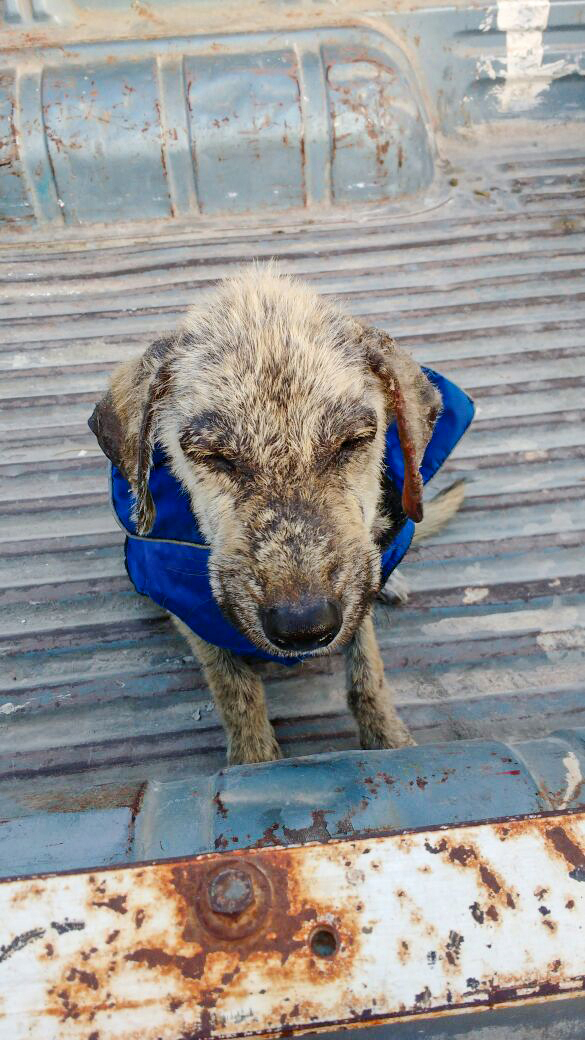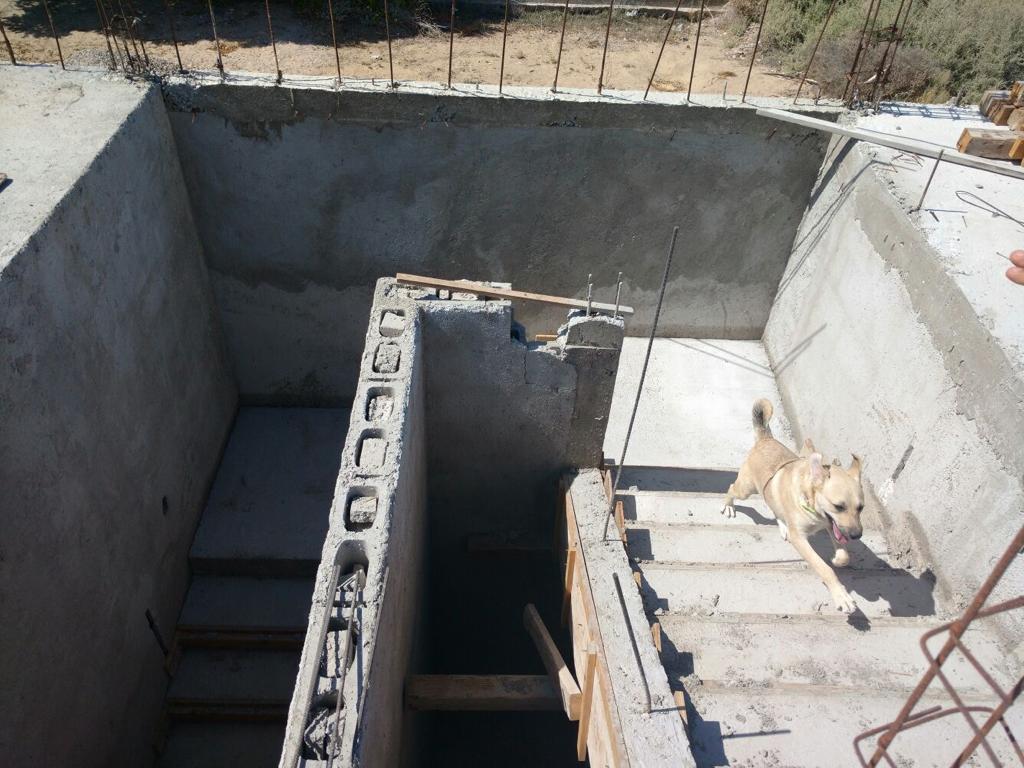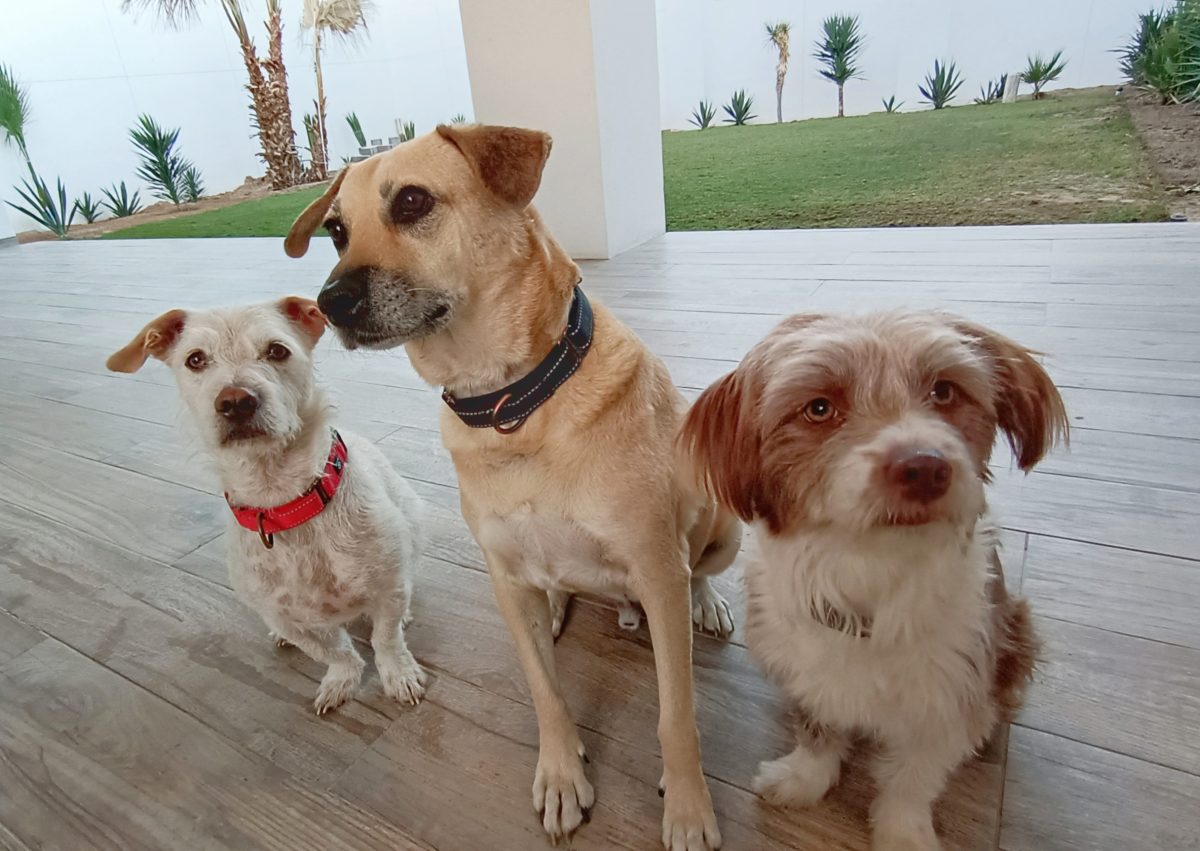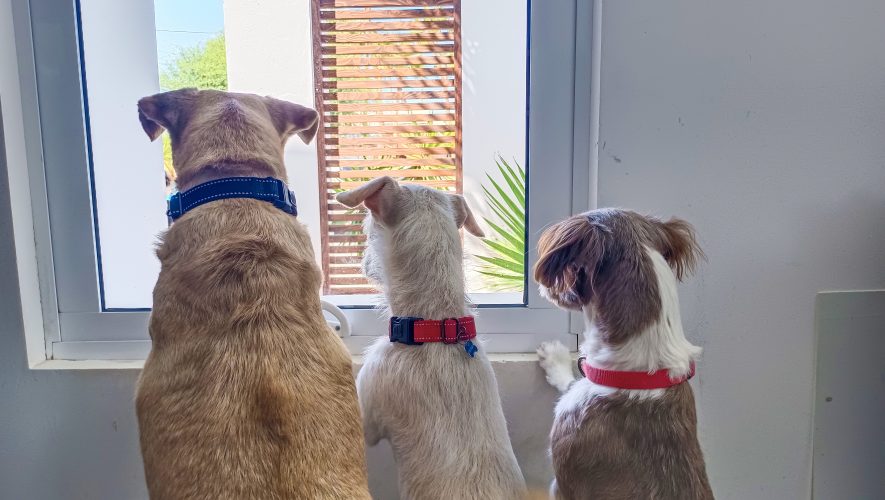Our two dogs are set to receive their monthly dose of flea and tick medicine tomorrow – precisely 4 weeks after the last dose, and nearly a month since the abrupt passing of their fearless leader Firulais due to latent ehrlichiosis. I must admit, I still don’t know quite how to pronounce that diagnosis, and had to google it for additional insight, though the term is prevalent in rescue posts from Barb’s Dog Rescue just north of town.
I have come to understand that ehrlichiosis is one of the bacteria that can be found in ticks and, despite nearly a decade of medicated baths, vaccination shots, and monthly applications of flea & tick medicine, it can lay dormant for years and then quickly shut down a dog’s system without early detection. There was no reason for us to suspect the silent killer lay waiting within Firu’s system, nor was the final straw detected during multiple visits to the vet throughout his final month – make that two vets – revealing itself only after two blood tests just four days before his passing.
Ehrlichi-whatsis?
Ehrlichiosis (err-licky-osis) is a tickborne bacteria similar to “rickettsia”, or rather, Rocky Mountain Spotted Fever (RMSF). This is noteworthy as just last year Sonora led the nation in number of rickettsia cases and deaths in people while Puerto Peñasco led Sonora in per capita cases. Official statistics from the Municipal Health Coordinator in Puerto Peñasco point to 46 cases and 10 deaths in humans from RMSF in 2022.
Following intense education and health campaigns coordinated through the local Health Center, Municipal Health Control, hospitals, schools, and civil society, in 2023 from January through May there have been 14 confirmed (human) RMSF cases in Puerto Peñasco with only 1 fatality. However, it continues to be Puerto Peñasco’s top health menace and addressing RMSF requires comprehensive programs including community clinics to apply flea & tick medicine, fumigation of homes and yards, intensive trash clean-up campaigns, as well as spay-neuter clinics to promote responsible pet ownership.
We were responsible pet owners. We are responsible pet owners. Yet, Firu still passed away with complications from ehrlichiosis; the bacteria had apparently been lurking there all along. As we look back and remember when Firu first arrived, we realize he must’ve already been host to the unwelcome sleeping passenger.
La Casa de Firulais
Firulais – “Firu” – or “Frito Lay” as I would tell my U.S. friends and family so the pronunciation came out about right – showed up on his own nearly a decade ago, quite frankly to die. In about May 2016, this bony-mangey-sick-near skeleton-of-a-dog crept onto the worksite where we were building our new home right in town.

As an architect, my husband had designed the house years before and we were excited at the prospect of one day moving (with our 16-year-old cat) from our two-bedroom apartment to the spacious, naturally lit, airy realization of his artistic mind. With the foundation down and the first-floor walls up, workers at the site soon had a daily visitor – a mere shadow of a figure we decided that was about 4-6 months old that made his way to the site from somewhere seemingly nearby. The workers wondered for a brief instance, “do we feed him or put him out of its misery?” They, along with my husband, decided to feed him – and built a make-shift doghouse in the corner where the refrigerator now stands.
At first, we couldn’t even tell what color this poor dog was. Several visits to vets, as well as to Rocky Pet just around the corner, solidified everyone’s rescue instinct as the scruffy dog quickly showed signs of survival; his first blue “spring jacket” a gift from the pet spa after early medicated baths.

There was the night his eyes appeared to really open for the first time. The days he’d eat alongside the construction workers. The months he lived at the site on his own after construction paused for a few months – guarding the work in progress as our elderly cat wanted nothing to do with him in the apartment. He became the tour-guide for friends and family we’d bring to the site – eventually bounding up the stairs as the house was built around him.

The walks around the neighborhood and strolls on the beach. The rides in the back of our 1972 VW Thing, grinning from ear to ear.

That time he and I were jumped by a neighbor pit-bull from down the street, resulting in stitches on his cheek. How he howled every time the train horn blared through town. How he begrudgingly accepted the new puppy our nephew showed up with right before Covid lockdown, though quickly became caretaker and mentor. Accepting yet another pup after she arrived with a story of her own on Easter morning just last year. And, there was that name.

What’s in a name?
Once my husband and I accepted we would now be dog people, not knowing if our new four-legged foreman would even make it through those early nights, conversations started as to what we would name our new family member. “Twitch”, our elderly cat at the time also curiously “came with a house” as she was a kitten who refused to budge when we moved into a rental in town a number of years back – twitching her tail like a rattle-snake, hence the name. But, what about this creature who barely managed to walk onto the worksite – what specific trait or inspirational word came to mind. Milagro? Survivor? Valiente?
As we tossed around names, unbeknownst to us the workers at the construction site had already dubbed the newcomer “Firulais” (pronounced ‘fee-du-LIES’ …or “Frito Lay”, remember?) Now what you may not know is the term Firulais is a common cheeky reference in Mexico to a street dog – it’s right up there with “Solovino” (or “solo vinó” meaning, “he just showed up”). Think of it as Rover or Fido – as in, “what’s that dog’s name?…that one we always see hanging around but not sure if it has a name or an owner,” “oh, that’s Fido.” In Mexico, that’s Firulais. For us it was Firu.

While Solovino (or “solo vinó”) can be quickly attributed to simple fact – “(the dog) just showed up” – cultural lexicon points to additional layers in deciphering Firulais (fee-du-LIES). From cultural blogs to newspapers, there’s popular consensus the term Firulais has its origins somewhat in English – though there’s also the theory it came from a former bullfighter turned clown who named his dog Firulais before himself taking on the name The Clown Firulais. For our purposes, I’m going with the first theory and the mixing and melding of language.
Perhaps the most popular theory indicates the now common name for a friendly stray perrito en Mexico came from the mid-20th century when farmworkers (think Braceros program 1940s-early 60s) from Mexico made their way to the U.S., some along with their dogs. As authorities would evaluate hombres’ best friend, they would say “Free of Lice” after a health check, as only dogs showing no signs of ticks, etc. could pass through. “Free of lice”…freeoflice…friolis… you see where I’m going here – soon morphed into “Firulais” – or so the story goes.
Firu el Maestro
The supervisor on a construction site in Mexico is known as the “maestro de la obra” (project leader). Yet, “maestro” is also more commonly translated as teacher. Firu was that maestro; the maestro on the project of what became known as Casa de Firulais; on site for every step of the second story, overseer of tile and finishes, daily greeter and amigo to all.

Firulais was also THAT maestro – the teacher. He taught our second Peñasco pup how to dig in the backyard and where to pee on walks. He taught our third Peñasco pup how to wrestle a dog twice her size (or rather, him) and to walk alongside us from the kitchen to the backyard for dinner, all to the tune of Darth Vader’s march (don’t ask). More importantly, he taught us through example the possibility of transformation – from a scrawny sickly street dog to head of household, by just showing up.
Perhaps one of the most essential lessons Firu left us at the end, and what we want to share with everyone here in Puerto Peñasco with its plethora of rescue dogs, is the importance of testing for any dormant diseases, particularly after “life on the streets”. Had ehrlichiosis been detected within Firu earlier, we have learned a 30-day regiment of medication could have helped rid him of the bacteria. Had we – or the vet – suspected his teary red eye in mid-April was more than a stuck eyelid (did you know dogs have 3 eyelids?) or possibly a food allergy, maybe we would’ve known to get him tested for ehrlichiosis or rickettsia from the onset. Maybe if we’d just had him tested for ehrlichiosis when first going through the healing process as his house was built. Maybe, just maybe.
Our Firulais passed away at the vet’s pet hospital sometime in the early hours of May 15, 2023 – Teacher’s Day in Mexico. We had painstakingly left him there the Saturday before with an IV hooked up and instructions to come back on Monday. We had almost come to terms he may need to be put down, though we expected to be able to say goodbye. We brought him back to Casa de Firulais and he is buried in the backyard, somewhere in the vicinity of Twitch’s final resting spot nearly 5 years before.
The day after we buried Firu, we took our other two dogs – Max and Chikis – back to the vet to get tested for ehrlichiosis. I am happy to say they were both negative. Tomorrow Max and Chikis are due for their next dose of flea & tick medicine. Thanks for the lessons, maestro, and so much more.



